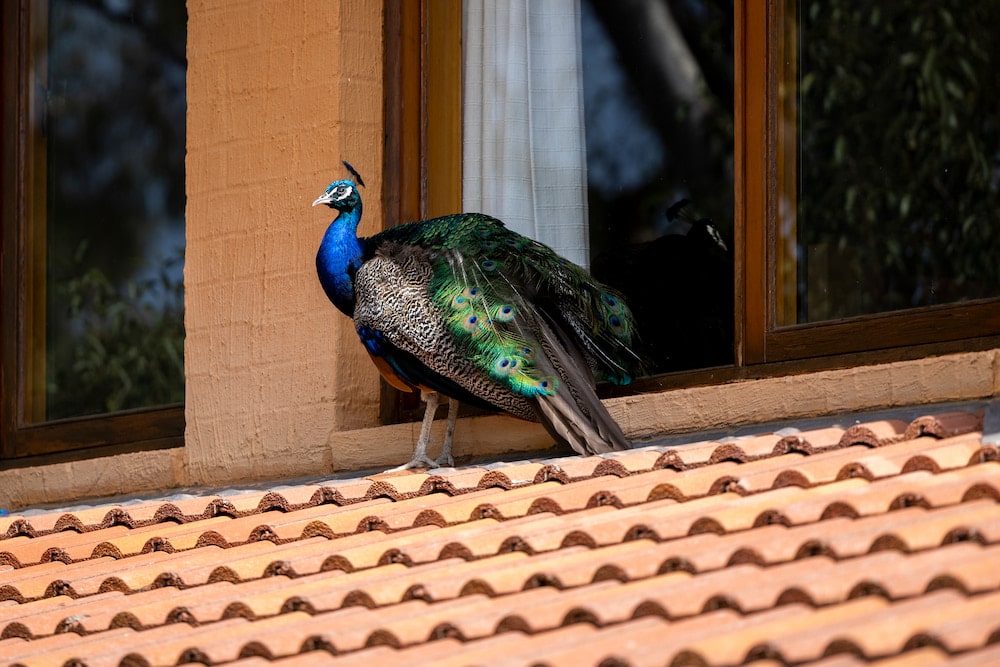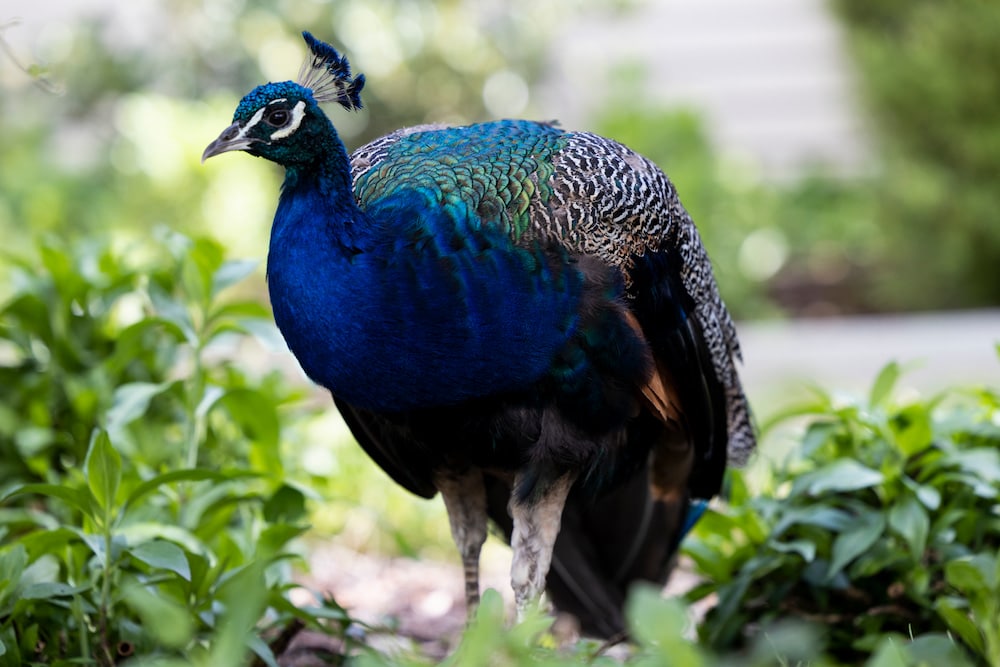Eight months since successfully campaigning for peafowl crossing signs, and nearly three years since saving the local peafowl population from an ACT Government imposed cull, community collective Narrabundah Peafowlers is again calling for change.
Seven of an estimated population of 30 birds have been killed since peafowl crossing signs were installed in four locations on La Perouse Street and Carnegie Crescent, each the result of a lethal encounter with a road vehicle.
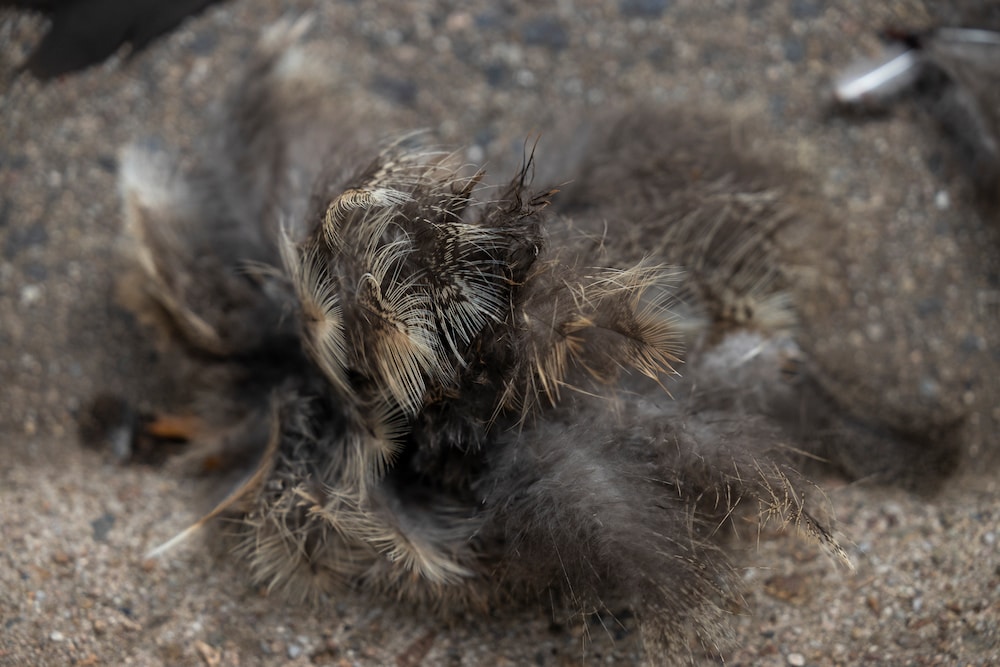
Two birds were hit by a car or truck within 48 hours of one another this week, a mature male called Pedro and teenage peahen Little Penny, on 23 and 25 February respectively.
Narrabundah Peafowlers convenor Tim DeWan says the first thing the group of passionate volunteers want is a conversation with ACT Government about reducing dangerous driving in the area, because the signs installed last year aren’t working.
“We started a campaign about signage for education, because a lot of people, especially those who weren’t locals, weren’t aware of the peafowl and were surprised,” he says.
“They’d say ‘My god, where did that big blue bird turn up from?’”
The Narrabundah Peafowlers provided artwork with a peacock on it for the signage, but officials opted for yellow signs with text only.
“It just looks like any other sign,” another Peafowler, Roy Chamberlain, says.
Both men are of the attitude that something is better than nothing, but neither believe the signs slow drivers.
Mr DeWan says trucks speed through the area, not allowing enough time to slow in case of a crossing peafowl when they reach the crest of a Carnegie Crescent hill.
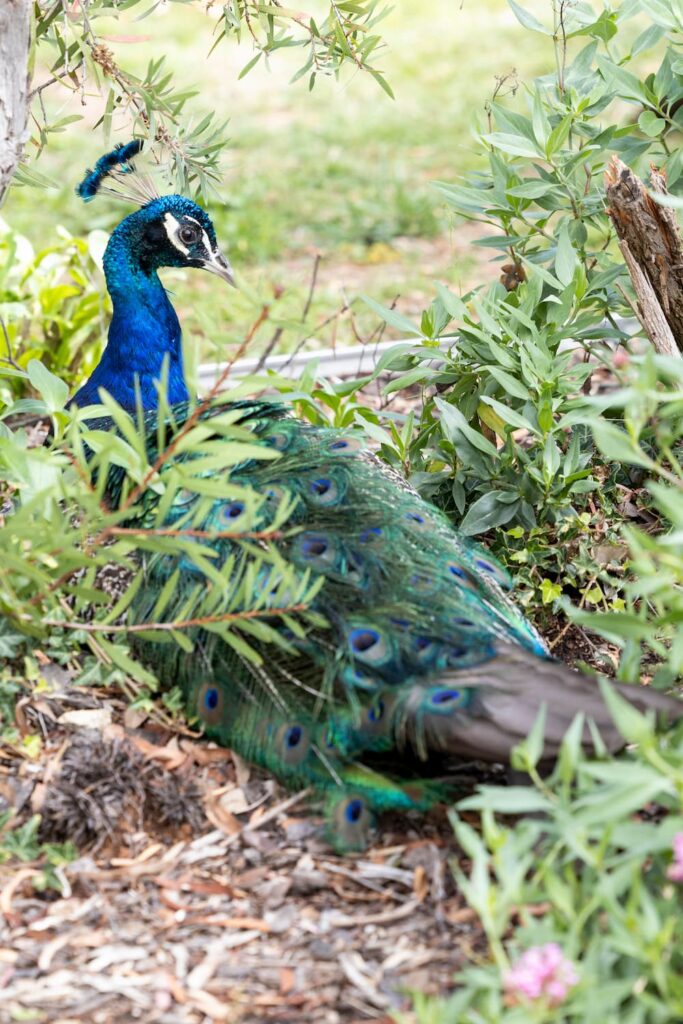
“Indifference and speed seem to be the two key issues for us,” Mr DeWan says.
The accident site of the most recent crash, near the corner of Carnegie Crescent and La Perouse Street, is 500m from Red Hill Primary School.
Whoever hit Little Penny today was approximately 50 metres from an upcoming stop sign upon impact.
Mr DeWan argues the vehicle must have been speeding, and he’s worried that what he believes is an increase in dangerous driving could eventually result in an accident involving a child.
“If you’re going at the correct speed, there is time to stop,” he says.
“Does it take the death of a child to do something about it? Just do the speed limit.”
“And pay attention,” Mr Chamberlain adds.
Mr DeWan has lived in the area for over 20 years, which is fewer than the elegantly feathered birds that have populated the inner-south suburb for three decades.
As he explains the history of the local peafowls – no one really knows where they came from – a local passerby stops to ask what Canberra Daily is photographing.
She’s not supportive of the flock living in Narrabundah, arguing the birds are out of place, there are too many of them, and their natural habitat is acreage.
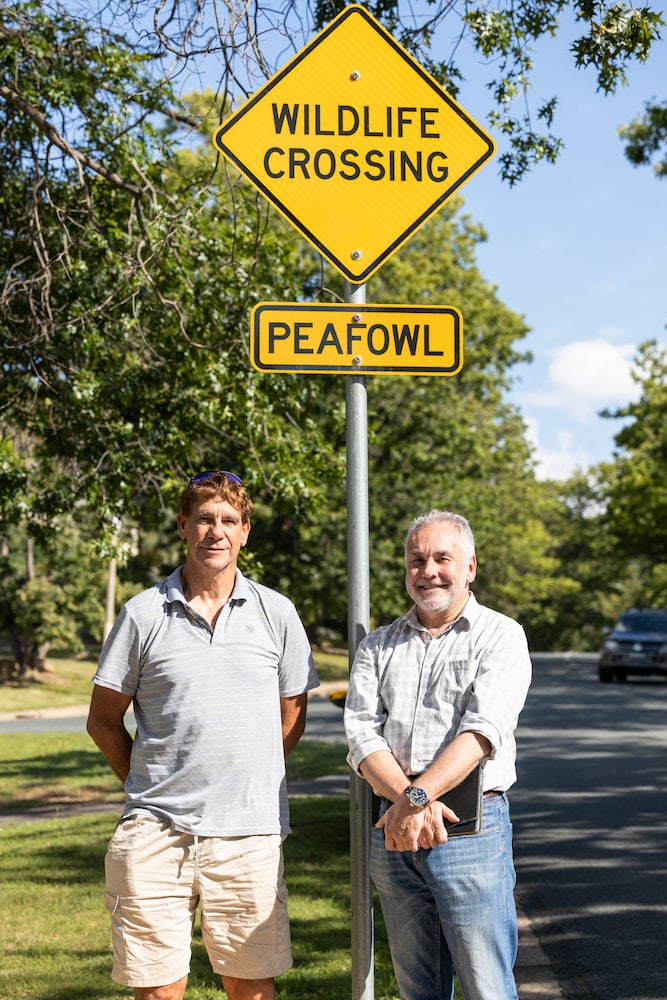
Later, Mr Chamberlain tells Canberra Daily he and his wife fell in love with their home in Narrabundah because of the peafowl.
“From our perspective, they add to the amenity of the area. It’s unique,” he says.
“We moved down from Sydney in 2013, and when we were looking at the house up here we saw one walking down the road, and we thought, ‘There’s a dog in the middle of the road!’
“And we got closer to it, and I thought, ‘What is it?!’
“It was right outside the house we were looking at buying, and Fiona, my wife and I just looked at each other and said ‘This is the place.’”
Mr Chamberlain says he likes to hear from people with different opinions, and “what we try to do is just engage with people”.
The Narrabundah Peafowlers meet less frequently than they did during the fight to prove peafowl in Canberra aren’t pests, but Mr DeWan says his community’s work never really stops.
“These birds have been here for 30 years, people have moved in here, knowing that the birds are here.
“We respect that some people like them, some people dislike them.
“But the majority love them and want them to stay.”
For more news:
- Police seek cyclist as potential witness in Page death
- Increased European wasp activity to continue until May
- Roll up, roll up to The Big Canberra Bike Ride!
